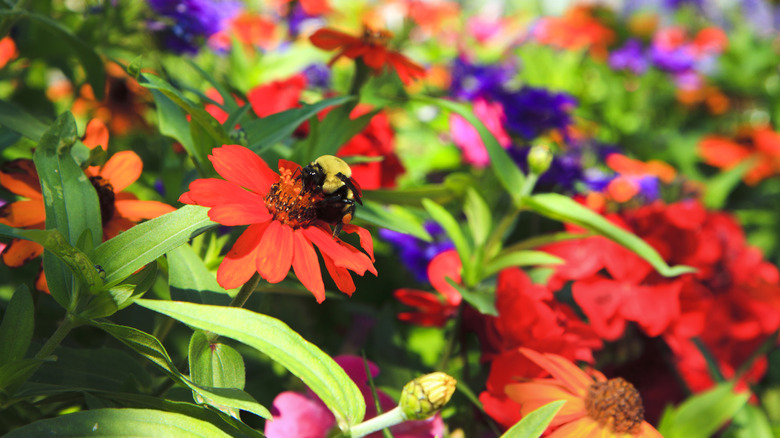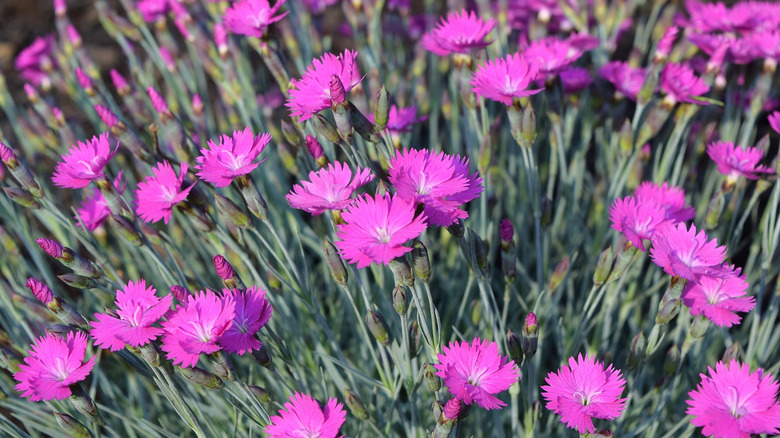The Pink Pollinator-Friendly Ground Cover You'll Want In Your Flower Bed
We may receive a commission on purchases made from links.
Using ground cover plants instead of mulch can give your flower garden an extra layer of eye-catching color. If you choose the right flowering ground cover, your garden is likely to attract more pollinators as well. 'Firewitch' dianthus (Dianthus gratianopolitanus) should be in the running if your planting site is sunny and well drained. Clumps of dianthus can be grown next to each other so they form thick mats of foliage that stamp out weeds. This perennial's gorgeous pink flowers bloom in May and June, drawing bees, butterflies, and moths while deterring rabbits and deer.
'Firewitch' dianthus is easy to grow as long as you don't give it too much water. This can encourage its crown to rot. Since dianthus can handle brief droughts, it's okay to let its soil dry between waterings. Dianthus can also tolerate alkaline soil, so it's a good companion for flowers and shrubs that like a soil pH level above 7.0. These include hydrangeas, lilacs, lavender, and California poppies. 'Firewitch' dianthus rarely grows taller than 8 inches, so it won't overshadow your garden's loftier specimens. This plant is hardy in USDA growing zones 3 through 9, which means it will thrive in most parts of the United States. You can even grow dianthus between rocks and on slopes, though it may not produce as many flowers if you do.
Building a pollinator garden around 'Firewitch' dianthus
'Firewitch' dianthus makes a terrific base for a pollinator garden you can fill with plants that delight hummingbirds and bring all kinds of bees to your yard. Many pollinator gardens feature native wildflowers as well as milkweed, which is the only plant monarch butterflies will eat. Choose other flowers that like full sun when designing a pollinator garden around 'Firewitch' dianthus, and avoid varieties that will only tolerate acidic soil. Borage (Borago officinalis) and wild indigo (Baptisia spp.) are good choices if you want bee-beckoning blue hues in your garden. Want some hummingbird-heralding red flowers, too? Try zinnias (Zinnia elegans) or cardinal flowers (Lobelia cardinalis).
Enrich your garden's soil with compost before planting dianthus, and then give it a slow-release nutrient booster, such as the FoxFarm Marine Cuisine time-release fertilizer, in the spring. Be sure to deadhead flowers that are done blooming, which will encourage new blooms to grow. Once the flowering process finishes in late June, snip off the top inch or two of your dianthus plants. If you're planting dianthus in a cooler growing zone, give the plants a 4-inch blanket of lightweight mulch for their long winter nap.

